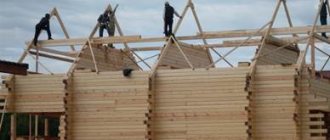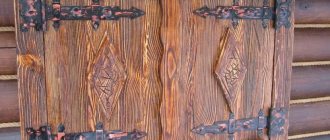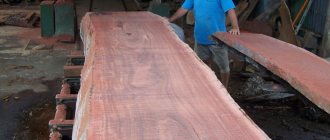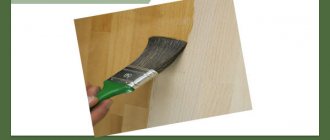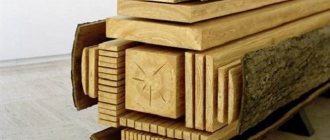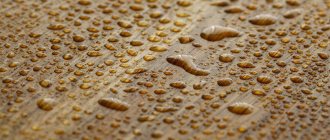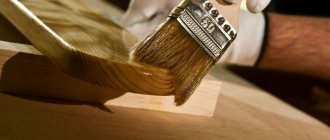Wood occupies a leading position in the construction market. Its characteristics and abilities have been tested over the years. It is used both for the construction of buildings and for various finishing works. But in turn, wood is inferior to its competitors (stone, plastic, metal) due to its low resistance to biological agents. Insects, mold, and fungi can cause significant harm to the material, its appearance and strength. You can protect wood from the effects of biological agents and extend its service life by treating it with folk protective agents.
Protecting wood with copper sulfate
This method of wood processing is the most affordable and widespread. Copper sulfate prevents the formation of rotting of the material for a long time. Mixing with its juice, it prevents the action of moisture on wood, which is the main cause of its decay. This product changes the shade of the wooden material, which needs to be taken into account.
But there are also disadvantages to using copper sulfate; it is unsafe. When heated, it releases toxic substances. And when working with the composition, you need to use gloves to prevent it from coming into contact with the skin, as it irritates it.
Wood bleaching
The method allows you to renew the surface of old and very darkened wood, restoring its natural shade. For this purpose, wood bleaching agents are used. The main active ingredient is active oxygen (more gentle) or chlorine. In addition, the composition includes antiseptic additives that help eliminate mold and prevent its further occurrence. After applying the composition, the oxidation process begins, as a result, the lignin that holds the cellulose fibers together becomes discolored.
To bleach wood, you need to apply the composition with a synthetic brush, wait the time specified in the instructions, and then rinse with water. In outdoor conditions, you should wait for dry and warm weather. To consolidate the result, it is advisable to cover the bleached surface with a protective varnish or oil.
Disadvantages of bleaching with chlorine or oxygen-containing compounds:
- The use of bleaching compounds is not recommended in cases where the wood is severely damaged, since the action of aggressive substances can accelerate its destruction;
- requires time and effort - after bleaching, the wood must be washed with plenty of water.
Protecting wood with oil
Wooden materials have been treated with oil since ancient times. For this they used mainly linseed oil; it protected the wood and strengthened its structure. The treated wood material had good adhesion. You can apply the oil using a brush or spray. But it takes a very long time to dry, and wood processing must be done in at least 3 layers.
You can also use teak or tung wood oil to protect the wooden material; they can provide greater strength and absorb faster. It is better to treat wood with hot oils, because in this state they penetrate much deeper into the structure of the wood, thereby protecting it better. In general, it is difficult to call oil or drying oil a folk protective agent. After all, the production of paints and varnishes occurs with the addition of oils.
Wood staining
Painting wood with paint, or enamel, or colored oil is the simplest and, perhaps, “ancient” way to renew any surface, including wood. The paint is applied with a roller or brush in even layers. Even a child can handle it.
Cons of simply painting wood:
- existing biological lesions remain in place, and it is better to remove them before applying paint;
- the texture and texture of the wood is completely hidden under the coloring composition;
- the coating will not be durable, it is unlikely to last longer than a couple of years, especially when used outdoors;
- requires the use of protective equipment.
The method of renewing wood should be chosen based on its appearance, the cost of processing compounds, as well as the willingness to spend time (for example, on sanding, etc.). With some effort, the tree will be transformed beyond recognition and will become “like new” - of course, if it has not rotted from the inside.
Riveting the ends of wood
Much more water penetrates through the ends of the wood, through their capillaries (running along the entire tree trunk). To prevent this, they used to “rivet the ends” by hitting the ends with a wooden or rubber hammer. Thereby destroying the capillaries and preventing moisture from getting inside.
This method of protection also provided strength to the ends and prevented them from cracking. Additionally, they were burned using a blowtorch. In this case, the charred ends also acquired bactericidal properties, preventing the appearance of biological pests.
Finnish wood material protection technology
Preparation of the protective composition:
- Dilute 700g of wheat flour in 9 liters of water. The result should be a mass similar in consistency to sour cream.
- Then stirring gradually add 1500 gr. iron sulfate, 1500 gr. slaked lime and 400 gr. table salt.
The wood must be treated with the warm mixture obtained. It should be applied in several layers, after the previous one has completely dried. This rot-proof technology can be used for wooden fences.
Folk remedies for impregnating wood
Not everyone has the desire or ability to buy expensive wood processing products. Purchased options are good because they have pre-known properties and certain quality and do not require lengthy preparation. Open it, stir it and start working. Traditional methods used to protect wood are much cheaper, but their preparation is a whole process. And the properties and the result depend on the observance of proportions and/or sequence of actions.
Not the only layer is involved in protecting wood from rotting and moisture.
Copper sulfate as an antiseptic for wood
Copper sulfate is transparent blue granules. Sold in small packages of 20–500 grams, there are kilogram packages, sometimes in bags of 20–50 kg. It's inexpensive. Using products based on it, you can treat wood against mold, fungi and other biological damage.
Copper sulfate as a means to protect wooden structures
Copper sulfate actively corrodes metals, so do not use metal containers or tools for work. Only plastic or glass.
How to make impregnation for protection from copper sulfate
An aqueous solution of copper sulfate is a good antiseptic for wood. Does not change color after treatment, but fades or is washed out over time. So such a budget replacement is suitable instead of a transport antiseptic. It is suitable for processing dry or seasoned wood.
- Aqueous solution for wood. Per liter of soft warm water 5–10 grams of copper sulfate. Stir until completely dissolved. When applied with a brush, apply at least twice when the first layer is completely dry. Approximate consumption for double application is 0.9-1 l/m². This method is good before storage or before finishing. It is important to dry the material after coating.
Temporary protection can be done using a solution of copper sulfate - For wooden elements that will be in direct contact with the ground, soaking in a solution of copper sulfate is required. The solution is made more concentrated - 20% or higher. That is, dissolve 200 grams of copper sulfate in 1 liter. Immerse the wooden elements in the resulting solution for 2 days. Having taken it out, we dry it for a month under a canopy in a ventilated stack. Posts treated in this way can be buried in the ground without any fear, and flooring or decking boards will last at least 20 years.
This is an inexpensive way to protect wood from rot and fungi. Using copper sulfate you can achieve non-flammability. To do this, add copper sulfate to the lime solution. A board whitened in this way becomes non-flammable.
Iron sulfate for wood protection
Another inexpensive antiseptic that can replace factory-made antiseptic is iron sulfate. It is used in gardening, so it can be found in stores of this specialization. The properties are approximately the same, but the compositions for processing are more complex, both in terms of the number of ingredients and the preparation technology. These compositions were invented by the Swedes and Finns, whose traditions of building with wood are no less ancient than ours.
Iron sulfate (iron sulfate) is green granules. Used in gardening
Finnish recipe for protective paint
Finnish recipe for protective impregnation of wood. It will even preserve the fence for decades. The accuracy of dosage and preparation sequence is important here. We take the following ingredients:
- 9 liters of water;
- 1560 each of iron sulfate and dry lime, ground into powder or dry lime pigment;
- 720 g rye flour;
- 360 g kitchen salt.
You can cook paint with antiseptic properties yourself and cheaply.
If you want a guaranteed result, do everything exactly, don’t change anything. There are already many options for replacing ingredients, but how long the modified recipe will last is unknown.
How to cook
The cooking sequence is as follows. Gradually add 6 liters of water to the flour, stir until smooth. You should get liquid sour cream. It will be easier and faster if you use a construction mixer. You will stir for a long time without heating with a wooden stick. As a compromise solution, stir with a stick until the lumps are completely dissolved, then warm up a little.
If you add red pigment, you get something like this color
Boil the rest of the water (3 liters) and gradually pour in, without ceasing to stir. The result is a paste of medium thickness. We put it on the fire, stirring, pour in salt, iron sulfate and lime powder or dry lime pigment. The result is not only impregnation, but also paint, the color is brownish-brown. That is, we not only protect the wood with one composition, but also paint it.
How to get a different color and how to apply
If you need a color other than brown, we get it by using lime pigment. But remember that the original color is brownish-brown. You won't get blue or light gray based on it. Red brick, ocher and other similar ones are easily obtained. You can select a specific color using trial batches.
The paint is applied to the wood with a brush in two layers. Apply the second layer after the first has completely dried. Over time, the color changes slightly and becomes lighter.
Swedish recipe for wood protection paint
It differs in composition, but the preparation technology is similar. The base color is brown. The ingredients needed are:
- 9 liters of water;
- 520 grams each of iron sulfate, salt and lime pigment;
- 480 grams of natural drying oil;
The preparation procedure is similar; drying oil is added at the end of the process. There are options in which 260 grams of iron sulfate and the same amount of red lead are taken. The color of the composition shifts towards yellow. That is, it is easier to obtain green shades based on it.
Application rules
Both wood protection impregnations - Finnish and Swedish - are applied to boards or logs that have not been painted before. Resinous varieties are best deresined. To do this, they are treated with a solution of soda ash (50–100 grams of soda ash per liter of water). Apply a warm solution (temperature at least 40 °C) twice, then rinse with warm water. Dried wood can be painted.
Iron sulfate is included in homemade paint for wood processing
It is better to apply Finnish and Swedish wood protection compounds on a cloudy day. Or choose a time so that the sun does not shine on the treated surface. After drying, the paint, even with mechanical impact, does not wear off. During precipitation, colored water may flow, but this does not particularly affect the appearance. Such treatment will preserve wooden products that are outdoors for 20 years or more.
Finnish and Swedish impregnation paint is applied in two layers. Before applying the second one, wait until the first one is completely dry. This may take more than one day. The thick binder is absorbed slowly. The drier the wood before painting, the faster it will dry.
Protecting wood with birch tar
To provide a high degree of protection to wooden material from insects and rot, you can treat it with birch tar or spruce resin. These compounds have a strong odor, they are soiled and sticky, which makes working with them difficult. Wood treated with tar cannot be subsequently painted, sanded or subjected to other mechanical impacts. In addition, wood with this resinous composition applied to it is easily flammable. Therefore, treated wood can only be used in underground parts of the building structure.
Protecting wood with used motor oil
This is the most common and inexpensive, one might even say free, method of providing protection to wooden material. It is used mainly in rural areas for processing non-residential wooden structures. Waste oil consists of 90% mineral oil, which is a good water-repellent and antiseptic agent. It also contains a lot of soot, which protects the wood from the destructive effects of ultraviolet rays. And a small part of acid salts that eliminate any type of fungus existing in the wooden material.
The working material is applied in a heated state to the surface of the material several times. Particular attention is paid to the ends and crevices of the wood. If the treated log is dug into the ground, then for efficiency, a little oil is added to the hole itself, and after the post is buried, the mining is poured around it. The disadvantage of using waste is its soiling and unpleasant dark tint.
Protecting wood with tar
Tar or bitumen is still used to prevent rotting of wooden materials. This method of protection is common for wood of underground structures or for the lower crowns of a log house, which experience adverse effects from the environment to a greater extent.
Before using tar or bitumen, they should be heated and mixed in diesel fuel. Then coat wooden materials with the resulting composition. This method is an effective protective method, but not entirely environmentally friendly. Although now they produce mastics and impregnations with the addition of bitumen.
Professional antiseptics
There are protective impregnations on the market from domestic and foreign manufacturers; according to the price-quality criterion, the following stand out:
- “Aquatex” (Russia) is a deep-penetrating impregnation, produced in the form of a primer and liquid impregnation, effectively protects against fungus, mold, ultraviolet radiation and moisture, can be used for edged lumber of natural moisture, applied with a brush or roller, the product can be used to treat a log house for shrinkage.
- “Senezh” (Russia) complex impregnation, provides long-term protection against mold and mildew, prevents fire, is used for treating residential buildings, bathhouses, outbuildings, sprayed or applied with a roller.
- “Neomid” (Russia) is a series of environmentally friendly impregnations for the prevention of rotting, used for treating walls and inter-crown insulation, can be used for interior work, forms a thin film, which is a protective mask, the product can be used to treat individual boards and beams.
Protecting wood with a mixture of propolis and sunflower oil
To prepare a protective mixture, you need to take 3 parts sunflower oil and 1 part propolis. Mix everything and apply to dry, cleaned wood using a sponge. Wooden material must be well impregnated. This method of protection against the formation of rot and microorganisms is effective. But you need to keep in mind that wood soaked in this mixture will quickly ignite.
These are the main folk methods of treating wooden material from rotting and the occurrence of biological pests. They consist mainly in protecting wood from water, which leads to the formation of rot and other unpleasant consequences, and in extending the durability of the entire structure. Folk remedies have many advantages over the use of synthetic compounds. Processing methods using them are much cheaper, almost all of them are harmless and hypoallergenic for humans.
But folk remedies are not able to cope with more serious enemies of wood, such as white house mushroom. This pest can completely destroy an oak floor in a month. It spreads quickly and infects healthy wood materials. Therefore, earlier they could not destroy it and burned entire houses in order to save the rest of the nearby wooden buildings. In such severe cases, it is better to use modern antiseptics and impregnations that are effective and available on the construction market.
Protecting wood with oil
Oil impregnation is one of the most ancient methods of preserving wood. Today oils are used more as a decorative finish, however, this does not discount their protective properties. Drying oil (boiled linseed oil), tung or Danish oil are best suited for these purposes. They not only enhance the natural beauty of wood, emphasizing its texture and color, but also create a moisture barrier. Liquid oil is absorbed into the structure of the wood, after which it polymerizes (hardens), forming an impenetrable hydrophobic layer over the entire surface. It protects against moisture and thereby prevents rotting.
Read more about what types of oils there are and how to work with them correctly in a separate article.
Once upon a time, deck boards of ships, beams of buildings and other critical structures were boiled in linseed oil. Today, this method of preservation cannot withstand competition with cheaper and more effective compounds. In modern construction, oils are used mainly for interior decoration, where the problem of rotting is not so pressing. For outdoor impregnation of wood, for example, decking boards and garden furniture, manufacturers offer special formulations containing antiseptic additives and modifiers that enhance hydrophobic properties.
One of the simplest and 100% environmentally friendly ways to modify oil is to combine it with wax. After treatment with this product, the surface looks more beautiful, but more importantly, the wax provides a reinforced hydrophobic barrier. The consistency of the preservative can be varied: from liquid impregnation to thick paste. You can read more about what oil wax is and how to prepare it yourself here.
What should you choose and what is better to buy?
In modern times, in terms of efficiency and good quality of processing of wooden structures, it is best to choose and buy factory-produced wood protection products. Factory production of antiseptic compounds will protect the wood of your wooden house or bathhouse from rotting and destruction caused by wood pests much better than folk remedies. High-quality protective compounds include antiseptics, impregnations and paints from NEOMID and PROSEPT.
Photo: NEOMID impregnations and antiseptics have good protective characteristics against biological pests of wood.
Photo: PROSEPT impregnations and antiseptics have excellent characteristics against biological pests of wooden structures.
How else can you treat wood against rot, moisture and bark beetle?
Expensive commercial formulations can sometimes be replaced with readily available materials.
Such “folk” remedies include:
- copper sulfate - used in the form of an aqueous solution (5-10%), the consumption rate of which is from 40 to 80 g per 1 m2 of surface. The vitriol solution penetrates the wood to a maximum of 1-2 cm and is easily washed out. Can be used for periodic processing of fences and wooden parts of external decoration. The reagent is toxic if swallowed;
- slaked lime - used to create a dense layer of calcium hydroxide on the wood to be protected. The solution is prepared from quicklime and water (1: 3 by volume) in a metal bucket (a plastic container may melt). The resulting mixture is mixed after cooling and applied with a brush or spray to a wooden surface. Pests and fungal deposits do not appear in a whitewashed wall. The disadvantage of this method is that the whitewash becomes soiled after application and the need for repeated treatments as it naturally washes out;
- linseed oil - helps protect wood from rot, moisture and pests. The coating is done by applying oil to a clean, dry surface and allowing the wood to become visually “dry.” The oil penetrates deep into the material and is not washed out of it over time. Impregnated wood does not lose its ability to “breathe” and is much more resistant to microorganisms.
Treatment of wood against rotting without chemicals and paint:
How to get advice and consultation and buy a good means of protection?
You can get professional advice on these antiseptic compounds from the honored worker in the field of wood protection from pests: Galina Nikolaevna Zelentsova by phone: +7 (905) 752-77-20.
If you have made a choice in favor of protective equipment of the Neomid, Pirilax, Prosept or other brands, then you can buy them at retail , pick up from the city of Balashikha - here: Contacts.
place a small wholesale order of effective wood protection products with delivery by calling; ;.
